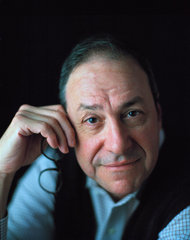WHO Exposed for Propaganda
Institutions within the World Health Organization are engaged in the creation and distribution of biased, propaganda films that seek to directly discredit what the WHO deems “undesirable materials”, often in contravention of WHA policies.
Recently, journalists got access to a job advertisement posted on un.org in mid-2015. The message read: “Cameraman wanted to shoot a video about asbestos.” The vacancy contained a detailed technical specification for making a propaganda film with the express intention of discrediting chrysotile asbestos, notwithstanding what science says or the majority of safe-use policies around the world. At the time of writing, the job posting in question has been removed from the website, but the editorial team saved screenshots.
In particular, the very wording of the task says it all: “Creating and processing high-quality video images of actors and scenes associated with the use of asbestos in Vietnam, in order to gather evidence for supporting campaign activities to ban the use of chrysotile asbestos in Vietnam.” That is, an independent international body which is supposed to impartially assess the healthcare situation in a given country, has openly declared its intention to fund the making of a propaganda video to promote a ban. So much respecting a sovereign country’s right to make its own laws…
Why did meat become carcinogenic?
According to a report published today by the British newspaper «The Daily Mail», the World Health Organization (WHO) listed bacon, burgers, sausages and other meat products among potentially cancer-causing substances. Raw meat is also likely to be included in the «encyclopedia of carcinogens». According to the expert opinion, it is only «slightly less dangerous than preserved products». Other meat products, according to doctors, are not any less dangerous than such poisons as arsenic and nicotine.
Equating everyday products with substances unlikely to be eaten by anyone, is a reflection of the WHO’s dubious approach to substance risk and danger assessment.
Thus, the International Agency for Research on Cancer (IARC), a part of the WHO, researches causes of the emergence of carcinogenic substances in the human body. It’s not a secret that sources of such influence are ubiquitous and the IARC’s list already comprises over 90 substances and factors.
The problem is that the IARC persistently uses the term «risk» in its statements, while admitting that it does not assess the actual risk.

Second Company Accuses Asbestos Lawyers Of Racketeering
A second company has accused plaintiff lawyers of using fraudulent tactics to win asbestos lawsuits, citing evidence uncovered after a federal judge opened records obtained in the bankruptcy of Garlock Sealing Technologies.
John Crane Inc., which like Garlock made industrial gaskets containing asbestos fibers, has asked a judge to allow it to join Garlock’s racketeering case against the Simon Greenstone law firm in Dallas and the Shein Law Center in Philadelphia.
Top WHO adviser says membership of Ban Lobby group is not corrupt
Any doubt about the end of supposed independence of the World Health Organisation was dispelled at the latest UN workshop on chrysotile.
Rather than the respected forum for careful consideration and scientific rigour of the past, the organisation’s apparatchiks have, sadly, succeeded in turning it into an international lobbying group who are now a law unto themselves.
Descending on Geneva at the end of March, the WHO, launched its latest, barely disguised, attempt to brow beat countries that use chrysotile into submission.
Launching an outright dismissal of the approach ordered by their political masters on the World Health Assembly (WHA) – to distinguish between chrysotile and other more dangerous forms of asbestos – the WHO introduced new – taxpayer funded -ways to call for a worldwide ban on the substance.
Uncivil servant
Maria Neira is an international civil servant. She is supposed to work for you and me.
As a leading figure at the World Health Organisation (WHO), her role is to implement decisions taken by international governments.
Sworn oath
She is meant to be neutral and impartial and has even sworn an oath to “exercise in all loyalty, discretion, and conscience” in her duties and “regulate (her) conduct with the interests of the World Health Organisation only in view…”
And yet Dr Neira, head of the WHO’s public health and environment department, seems to think she knows better than the democratically elected officials.
On the issue of asbestos Dr Neira seems to believe she has the right to ignore carefully thought through policies thrashed out by health ministers from global governments at the World Health Assembly (WHA), which directs the WHO’s work.
Differentiated approach
Those elected officials, after much careful deliberation, decided that the best way to eliminate the terrible blight of asbestos related diseases was “a differentiated approach to regulating its various forms – in line with the relevant international legal instruments and the latest evidence for effective interventions”.
With much care, they acknowledged, that dealing with asbestos-related disease needed to reflect the different forms of asbestos; on the one hand, deadly blue and brown amphiboles, and on the other, white chrysotile, which is safely used in the majority of countries around the world.
But despite this careful reflection and well thought through orders, Dr Neira has decided she knows better – mirroring the clarion call of lobbyists and lawyers making millions from asbestos lawsuits – even going so far as to post her views on YouTube, she is backing a global ban on asbestos, including chysotile.
Spaniard Dr Neira, who earns more than US$100,000-a-year funded by taxpayers, said: “WHO considers that it will be feasible to go for the elimination of asbestos-related diseases, and obviously the most efficient way to do that will be to eliminate the cause of asbestos-related diseases, so stop the use of asbestos, all types of asbestos.”
Not differentiated forms of asbestos
But what about the WHA’s order to take a “differentiated approach”?
According to Dr Neira, “there is a sentence that says ‘with a differentiated approach’ but this is related to the legal instruments you want to use at country level, but it is certainly not referring to any differentiated forms of asbestos. For us, all forms of asbestos including obviously chrysotile are carcinogenic”.
Really? So what did the WHA – “the supreme body for our policy recommendations”, as she calls it – mean when it referred to “various forms”?
Apparently, she, like her friends in the asbestos ban lobby, has simply chosen to ignore what the WHA clearly acknowledged, that there are different sorts of asbestos and the risks associated with them are also different.
Dr Neira says: “We have a resolution where all member states request the WHO to develop a Global Plan of Action on Workers Health and part of that resolution asks us to go to for a global campaign on elimination of asbestos-related diseases. So we have a very solid basis for conducting our work, plus the fact that people have been suffering from asbestos-related diseases for years now and the evidence now is overwhelming.”
So she has evidence that chrysotile, as well as blue and brown asbestos, is responsible for the spread of disease?
No evidence
Well, actually, no, as she says: “The evidence is there, I mean there is extremely solid evidence. It’s true that asbestos cancer, asbestos-induced cancer, will take 20 years to appear so it will be difficult to differentiate lung cancer caused by asbestos and by other causes like tobacco for example in countries where you don’t have these epidemiological studies linking exposure in the working environment to asbestos to a type of cancer. In developing countries, in many of them we don’t even have cancer registries. There are no reasons to think that in Africa it will not happen the same or in Asia. Therefore for us the evidence is there. We know that cancer is happening. And we don’t want to wait 20 years until we start to count the number of deaths and to look at the increase in the number of cancers.”
So what is going on? The participants at the WHA specifically inserted the language about a differentiated approach to reflect the fact there are different types of asbestos and different risks associated with them.
Supreme body
But Dr Neira, has unilaterally chosen to completely ignore this, directly contradicting the orders of the WHA, the “supreme body”, as she calls it.
Dr Neira has become a global anti-asbestos activist, repeatedly saying: “The most efficient way (to eliminate asbestos related diseases)…will be to stop the use of all forms of asbestos….”
How has this happened? How has a legitimate health issue, the very toxic affects of amphiboles, morphed into an ugly business filled with fraud and undue pressure on developing countries?
The WHO, led by Dr Neira, seems to have been completely taken in and is deliberately misinterpreting its mandate. It is ignoring its democratically elected leadership – and enacting a set of policies that are odds with formal and official policy.
Has the WHO gone rogue? Is it in the pocket of the powerful anti-asbestos lobby – fuelled and funded by those who make millions from lawsuits or by supplying substitutes? Dr Neira would appear to have many questions to answer.
Lies, Damn Lies and Statistics: When 107,000 deaths are not 107,000 deaths.
“We know as well that there is an estimation of more than 100,000 deaths that can be attributable to exposure to asbestos, all types of asbestos,” says the WHO’s Dr Maria Neira.
“Each year around 107,000 people die from asbestos related cancers, mesothelioma and asbestosis (fibrosis of the lung) as a result of exposure to asbestos,” says leading anti-asbestos lobbyist Karen Kazan Allen.
“There are 107,000 asbestos-related deaths worldwide every year,” says attorney Steven Kazan, the brother of Karen Kazan Allen, who has earned millions of dollars from asbestos-related lawsuits.
The frightening death toll is cited as “evidence” of the need for a total ban on all forms of asbestos.

Asbestos Fraud Sunshine: a judge plans to open up evidence in the Garlock case

Federal bankruptcy Judge George Hodges in February took a bold step against asbestos litigation fraud, and the good deeds continue. The North Carolina jurist has decided to unseal all the evidence in his high-profile asbestos case.
Asbestos claims drove gasket-maker Garlock Sealing Technologies into bankruptcy in 2010, and the tort bar demanded the company hand over $1.3 billion. Judge Hodges allowed for discovery into some of the claims and issued an opinion skewering the plaintiffs’ lawyers for a “startling pattern of misrepresentation.” He detailed how the tort bar was essentially double-dipping—filing claims with outside asbestos trusts in which they blamed non-Garlock products for their diseases, even as they blamed Garlock in court.

Busting the Asbestos Racket: A federal judge finds evidence of deliberate legal deception

The worst public scandals are often those that travel in plain sight, and a prime example is the asbestos litigation racket. We’ve been writing about it for years, and now a judge in North Carolina has issued a remarkable opinion exposing just how rotten it is.
The case involves Garlock Sealing Technologies, a gasket maker forced into bankruptcy in 2010 by a flood of bogus claims. Plaintiffs lawyers were insisting that Garlock set aside $1.3 billion for victims of the deadly asbestos-related disease, mesothelioma. Last month federal bankruptcy judge George Hodges instead accepted Garlock’s liability estimate of $125 million and roasted the plaintiffs bar for dishonesty.

The Asbestos Scam
In May, Carolyn McCarthy, a nine-term congresswoman from Long Island, was diagnosed with lung cancer. Her treatment began almost immediately, causing her to take a lengthy absence from her office while she fought the disease. At the same time, McCarthy, 69, ended a pack-a-day cigarette habit that she’d had for most of her life, presumably because she understood the link between cigarette-smoking and lung cancer. Scientists estimate that smoking plays a role in 90 percent of lung cancer deaths.
“Since my diagnosis with lung cancer,” she wrote in a recent legal filing, “I have had mental and emotional distress and inconvenience. I am fearful of death.” She added, “My asbestos-related condition has disrupted my life, limiting me in my everyday activities and interfering with living a normal life.”
Asbestos-related?
Yes, that’s right. It’s hard these days for smokers to sue tobacco companies because everyone knows the dangers of cigarettes. Instead, McCarthy has become part of a growing trend: lung cancer victims who are suing companies that once used asbestos.

The Asbestos Scam, Part 2

Six weeks ago, I wrote a column about a ridiculous lawsuit being brought by Carolyn McCarthy, a congresswoman from Long Island. A smoker for most of her life, McCarthy has lung cancer. Yet her lawyers claimed that it was her “exposure” to asbestos, through the work clothes of her father and brother, both boilermakers, that triggered her cancer. Though McCarthy certainly deserves our sympathy as she fights cancer, it is hard to see her lawsuit as anything but an undeserved money grab — and the latest twist in asbestos litigation, the longest running tort in American history, with no end in sight.
Then again, maybe there is finally an end in sight. Late Friday afternoon, Judge George Hodges, a federal bankruptcy judge in North Carolina, wrote a breathtaking decision, in which he essentially pulled the lid off another form of asbestos scam. Though he shrank from labeling the actions of the plaintiffs’ lawyers involved in asbestos litigation as “fraudulent,” he did describe the litigation as “infected with the impropriety of some law firms.” It’s a potential game-changer.

As Asbestos Claims Rise, So Do Worries about Fraud
Q&A: What’s the Asbestos Risk Today?
Three decades after Manville Corp. collapsed under an avalanche of asbestos litigation, personal-injury claims continue to pile up at a rate of 85 per day.
They find their way to a small office building in suburban Virginia, where processors evaluate the paperwork of pipe fitters and welders and shipbuilders who say they contracted debilitating lung diseases from the company’s insulation products. By last March, a Manville bankruptcy trust had already paid out nearly $4.3 billion.
So when a beneficiary of one David E. Knight came to the trust saying the former seaman had succumbed to the deadly cancer mesothelioma, the administrators didn’t blink. Within five weeks, the claimant received a check for $26,250.

Bogus Asbestos Claims Cheat Companies, Lawyer Testifies
Fraudulent claims for asbestos exposure are shortchanging companies and legitimate victims, former judge and McCarter & English attorney Peggy L. Ableman testified today in support of legislation aimed at curtailing false claims on an estimated $30 billion in assets.
Under the current system, people claiming harm from asbestos can seek damages from trusts set up by bankrupt companies and simultaneously sue non-bankrupt companies, using inconsistent information about how and when they were exposed, Ableman said in a hearing before the U.S. House of Representatives Subcommittee on Regulatory Reform, Commercial and Antitrust Law today.
Companies are “often led to believe — erroneously — that their products were far more responsible for the plaintiff’s disease than what may have been the case, because they have no way of knowing the substance of an individual plaintiff’s claims,” Ableman said.

Defense attorney: Judges should look for asbestos claims fraud
EDWARDSVILLE, Ill. (Legal Newsline) – A recent ruling by a bankruptcy judge that exposed “double dipping” has an attorney in the nation’s asbestos litigation epicenter calling for more transparency between the two systems set up to compensate people sickened by asbestos.
“The real issue for me is whether the courts will require claimants to file trust forms before trial,” said Brian Huelsmann of HeplerBroom in Edwardsville, Ill. “What defendants are looking for is more transparency with trust filings.”
Huelsmann was reacting to a decision out of the Western District of North Carolina, in which U.S. District Judge George Hodges found a “startling pattern of misrepresentation” by plaintiffs’ attorneys in manipulating evidence of exposure as it pursued Garlock Sealing Technologies, first in court and then in bankruptcy proceedings.
Plaintiffs wanted to settle Garlock’s liability in bankruptcy for up to $1.3 billion; Garlock valued its liability at $125 million. Hodges found Garlock’s figure to be a reliable estimation.





